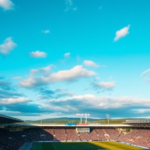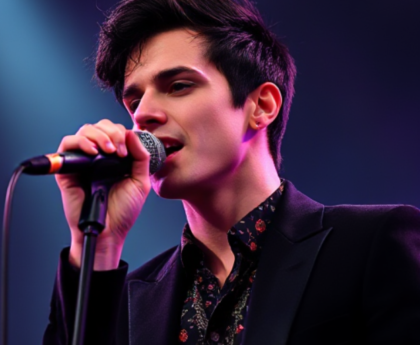The Edinburgh Derby, a fixture steeped in history and passion, brings together two of Scotland’s most storied football clubs: Hibernian (Hibs) and Heart of Midlothian (Hearts). This rivalry, one of the oldest in world football, transcends the game itself, embedding itself deeply in the social and cultural fabric of the Scottish capital.
A Rivalry Born from the City’s Division
The roots of the Edinburgh Derby lie in the distinct social and religious backgrounds of the clubs. Hibs, founded in 1875, emerged from the Irish Catholic immigrant community in Leith, while Hearts, established a year earlier in 1874, were born out of the predominantly Protestant working-class areas of Edinburgh.
This socio-religious divide fueled the early tensions between the two clubs, adding layers of cultural and social significance to their on-field clashes.
While these divisions have softened over time, the historical context remains an intrinsic part of the rivalry, influencing fan allegiances and the broader narrative of the derby.
Early Dominance and Shifting Fortunes
The early years of the Edinburgh Derby were marked by Hearts’ dominance. The team enjoyed significant success in the Scottish league during the early 20th century, establishing themselves as a force to be reckoned with. Meanwhile, Hibs struggled to match their rivals’ achievements, often playing second fiddle to the maroon side of the city.
The mid-20th century saw Hibs experience a resurgence. They won their first league title in 1948 and went on to enjoy a period of sustained success in the 1950s, led by their famous “Famous Five” forward line. This era was a turning point for Hibs, as they began to challenge Hearts’ supremacy in Edinburgh.
By the latter half of the 20th century, the rivalry had become more evenly balanced. Both clubs experienced periods of triumph and decline, with neither side maintaining consistent dominance. This ebb and flow have continued into the 21st century, keeping the rivalry fiercely competitive.
David Gray’s Moment of Glory
One of the most iconic moments in the derby’s history occurred in the Scottish Cup final of 2016. Hibs, having endured a 114-year wait for major silverware, defeated Rangers 3-2, with captain David Gray scoring a dramatic injury-time winner.
Although this was not a direct derby match, it reignited the rivalry, as Hibs fans celebrated their triumph with fervor, much to the chagrin of their Hearts counterparts.
This victory became a symbol of hope and resilience for Hibs, marking a modern chapter in their storied history.
On-Field Intensity and Memorable Moments
The Edinburgh Derby is synonymous with fierce competition and passionate atmospheres. Matches are often characterized by high-octane encounters, hard tackles, and moments of brilliance or controversy.
The rivalry has delivered countless unforgettable moments, from stunning goals to last-minute winners, dramatic red cards, and intense crowd reactions.
The derby’s unpredictability is a significant part of its allure. Regardless of form or league position, both clubs often rise to the occasion, making every fixture a spectacle for fans and neutrals alike.
Beyond the Pitch: A City Divided
The rivalry extends far beyond the confines of the pitch, permeating the social and cultural life of Edinburgh. Pubs, workplaces, and neighborhoods often divide along club lines, with allegiances passed down through generations.
Derby week is a time of heightened anticipation and tension across the city, culminating in the electrifying atmosphere of match day.
For many Edinburgh residents, supporting Hibs or Hearts is more than a choice—it’s a way of life, reflecting the city’s rich and diverse heritage.
The Modern Era: A New Chapter in the Rivalry
In recent years, both clubs have faced challenges but remain committed to long-term success. Hearts, with their newly renovated Tynecastle Park, have focused on financial stability and fan engagement, while Hibs have invested in youth development and infrastructure, including the state-of-the-art training facilities at East Mains.
The modern era of the rivalry continues to deliver memorable encounters, with both clubs striving to assert dominance. While silverware remains elusive for both sides, the derby’s intensity and significance show no signs of waning.
Women’s Football: A Growing Rivalry
In recent years, the rivalry has extended into women’s football, with Hibernian Women and Hearts Women making significant strides in the Scottish Women’s Premier League.
While Hibernian Women have traditionally been the stronger side, Hearts Women have been steadily improving, mirroring the competitive nature of their male counterparts.
The growth of the women’s game has added a new dimension to the Edinburgh Derby, bringing the passion and intensity of the rivalry to a wider audience and inspiring the next generation of players and fans.
The Impact of Fan Culture
The fan culture surrounding the Edinburgh Derby is integral to its enduring appeal. Both sets of supporters bring unique traditions and chants, creating a vibrant and often charged atmosphere. From Hibs’ iconic “Sunshine on Leith” anthem to Hearts’ renditions of “The Hearts Song,” the rivalry is as much about the fans as it is about the players on the pitch.
Fan rivalries are most evident during derby matches, where the noise and energy of the crowd play a significant role in shaping the spectacle. For many, the derby represents a sense of belonging and identity, making it one of the most anticipated events in the Scottish football calendar.
The Future of the Edinburgh Derby
As both clubs continue to evolve, the future of the Edinburgh Derby looks bright. With investments in youth academies and community outreach programs, Hibs and Hearts are nurturing a new generation of players and supporters.
The rivalry remains a cornerstone of Edinburgh’s social and cultural identity, offering a unique lens through which to view the city’s history and passions. Whether through historic clashes, dramatic moments, or the enduring commitment of their fans, the Edinburgh Derby stands as a testament to the power of football to unite and divide, inspire and provoke.
In a city where football is more than a sport, the Edinburgh Derby remains a cherished tradition—a rivalry that transcends generations and continues to captivate all who witness it.
FAQs
Q: When was the first Edinburgh Derby played?
A: The inaugural Edinburgh Derby took place on Christmas Day in 1875, with Hibernian and Hearts competing in a match that ended in a 1-1 draw. This fixture marked the beginning of a fierce rivalry that has endured for over a century.
Q: How often do Hibernian and Hearts play against each other?
A: Hibernian and Hearts typically face each other at least three times during the Scottish Premiership season. Additionally, they may encounter each other in domestic cup competitions, such as the Scottish Cup or the Scottish League Cup, leading to multiple derbies in a single season.
Q: What is the significance of the Edinburgh Derby in Scottish football?
A: The Edinburgh Derby is one of the oldest and most passionate rivalries in Scottish football. It not only represents a battle for local supremacy in Edinburgh but also holds significant implications for league standings and fan pride. The matches are known for their intense atmosphere and competitive spirit.
Q: What was the result of the most recent Edinburgh Derby?
A: In the latest Edinburgh Derby, Hibernian secured a 2-1 victory over Hearts at Tynecastle Stadium. This win was particularly notable as it marked Hibs’ first away victory against Hearts in five years. Goals from Josh Campbell and Dwight Gayle sealed the win for Hibernian, while an own goal by Rocky Bushiri accounted for Hearts’ lone score.
Q: Who are some notable players who have played in the Edinburgh Derby?
A: Over the years, many talented players have featured in the Edinburgh Derby. For Hibernian, legends like Pat Stanton and Franck Sauzée have left their mark, while Hearts have boasted stars such as John Robertson and Rudi Skácel. More recently, players like Dwight Gayle have made significant contributions, with Gayle scoring a decisive goal in the latest derby.
Q: How do fans typically celebrate victories in the Edinburgh Derby?
A: Celebrations vary, but they often include singing club anthems, waving flags, and, in some cases, playful antics. For instance, after Hibernian’s recent victory at Tynecastle, player Elie Youan humorously conducted chants using a corner flag wrapped in Hibs’ colours, delighting the away supporters.
To read more, click here.



